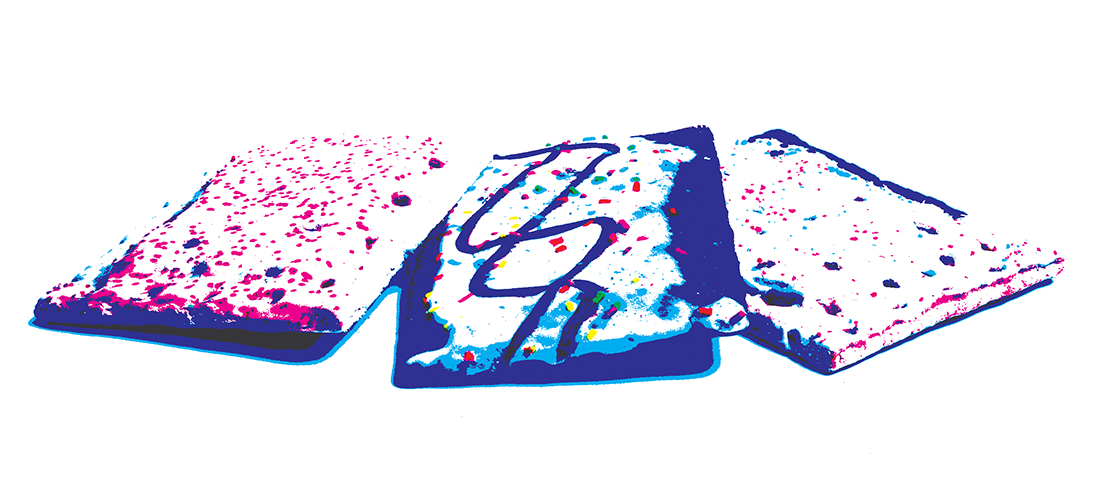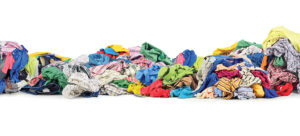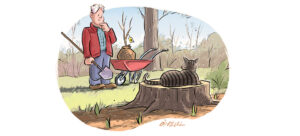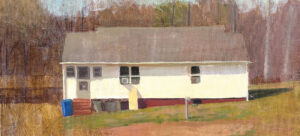
Pop-Tarts for Turfnauts
The Space Age breakfast pastry continues to orbit
By Cynthia Adams
Jerry Seinfeld is making a movie about Pop-Tarts.
What took him so long?
Since they first hit grocery shelves in 1964, Pop-Tarts remain a smash Kellogg’s hit. In the brand’s own words, they were the original “breakfast treat!”
Who doesn’t like a treat?
Flavors, mind you, frequently rotated. As American Frankenfood rose to prominence, the product soared. Because, well, you toast Pop-Tarts (or not) and that’s it! Pop them straight into your mouth or lunch box. It was a hybrid pastry/cookie, which, as Seinfeld says, couldn’t be stale, because it had never actually been fresh.
Fresh-ish would suffice.
Americans were going places — like the moon!
Heading into new frontiers, astronauts needed transportable food-like things that would hold up another 10 lightyears. So did we land-locked turfnauts (a word I just invented), who might have to hit the fallout shelters if the Russians dropped the big one.
1964 was a seminal year for the power of design and expediency. Things in tubes (Pringles!) populated grocery shelves, along with Ruffles potato chips, Doritos and Bugles.
A sugary cereal with marshmallow bits and colored charms, Lucky Charms, debuted, branded by a daft Leprechaun.
But Pop-Tarts lofted itself into the public consciousness, rocketing off shelves with spacey je ne sais quoi. As Seinfeld said in The New York Times, they expanded possibilities from toast, cereal and frozen-orange-juice-in-a-can. (OJ was passé once Tang hit.)
Revert to a childlike POV: Loosened from a space-race inspired wrapper, Pop-Tarts looked like something you could breakfast on while orbiting the cosmos, washed down with a squirt of Tang!
Nobody knew what was actually in it, but that stopped no one from eating it — ever.
Pop-Tarts, brought to you by the health-nut founded Kellogg’s, grasped that youthful desire to start the morning the way any child in the world likes best: sugary dough stuffed with a corn-syrup filling.
When Kellogg’s execs heard that Post, their main rival, had a toaster pastry ready for market, they hustled. (Post got lost in the weeds testing names with the lamest focus group ever. Country Squares won.)
Kellogg’s understood the stakes, and drew inspiration from Andy Warhol, the king of pop culture. Some say he even consulted on name and packaging.
If Warhol did for Kellogg’s pastry-in-a-box what he did for Campbell’s tomato soup, “Why just think!” Kellogg’s people whispered.
Country Squares beat Pop-Tarts to the market, and should have beaten the cinnamon-sugar stuffing out of them.
But Post’s stodgy name had less panache than Country Crock butter.
Post rebranded Country Squares as Toast ’Ems. But too little, too late.
Within two weeks Pop-Tarts sold out, and Kellogg’s ran super apologetic ads. “Oops! We Goofed,” read its ads. The breakfast brand had underestimated the power of food with an unlimited shelf life paired with a Pop Art icon’s influence.
Kellogg’s later tested a Pop-Tarts cereal.
To this day, Kellogg’s sells “billions of Pop-Tarts a year,” according to Andrew Smith in Fast Food and Junk Food: An Encyclopedia of What We Love to Eat. Its best seller? Cinnamon brown sugar, one of four original flavors.
In 2001, the U.S. rained free Pop-Tarts and herb rice on Afghanistan by air — a PR effort. The Pop-Tarts? A show of what good will and ingenuity looks like from people who have loved that food-thingy forever.
“Sales still soar,” writes Huffington Post.
And Warhol? He endures, too, like Pop-Tarts. “Marilyn” just sold for a hot $195 mil. OH
Cynthia Adams is a contributing editor to O.Henry.





